As stated, there is no LISTAGG() function, and there is also no built-in feature for creating a custom aggregate function. However, there are two possibilities that get the output.
Example one
Data step with DOW processing and hashing for tracking distinct flag values while concatenating within a group.
data want;
if 0 then set have; *prep pdv;
length flags $200;
declare hash _flags();
_flags.defineKey('flag');
_flags.defineDone();
do until (last.f2);
set have;
by f1 f2;
m1_sum = sum(m1_sum,m1);
m2_sum = sum(m2_sum,m2);
if _flags.find() ne 0 then do;
_flags.add();
flags = catx(',',flags,flag);
end;
end;
drop m1 m2 flag;
_flags.delete();
run;
Example two
Create a FCMP custom function used from within SQL. Because FCMP can not create an aggregate function, the result will be automatically remerged against original data which must then be filtered. The FCMP function also uses a hash for tracking distinct values of flag within a group.
proc fcmp outlib=sasuser.functionsx.package;
function listagg(f1 $, f2 $, n, item $) $;
length result $32000 index 8;
static flag;
static index;
declare hash items();
if flag = . then do;
flag = 1;
rc = items.defineKey('item');
rc = items.defineDone();
end;
static items;
index + 1;
rc = items.replace();
if index = n then do;
declare hiter hi('items');
result = '';
do while (hi.next() = 0);
result = catx(',',result,item);
end;
index = 0;
rc = items.clear();
return (result);
end;
else
return ("");
endsub;
run;
options cmplib=sasuser.functionsx;
proc sql;
create table wanted as
select * from
(
select /* subselect is a remerge due to 'listagg' mimic */
f1,
f2,
listagg(f1, f2, count(*), flag) as flags,
sum(m1) as m1,
sum(m2) as m2
from have
group by f1, f2
)
where flags is not null /* filter the subselect */
;
quit;
Ideally a hash of hashes would have been used, but FCMP only provides for hash instance creation in a declare statement, and dynamic hashes can not be instantiated with _new_. SAS Viya users would be able to use the new component object Dictionary in an FCMP function, and might be able to have a Dictionary of Dictionaries to track the distinct flag values in each group.

